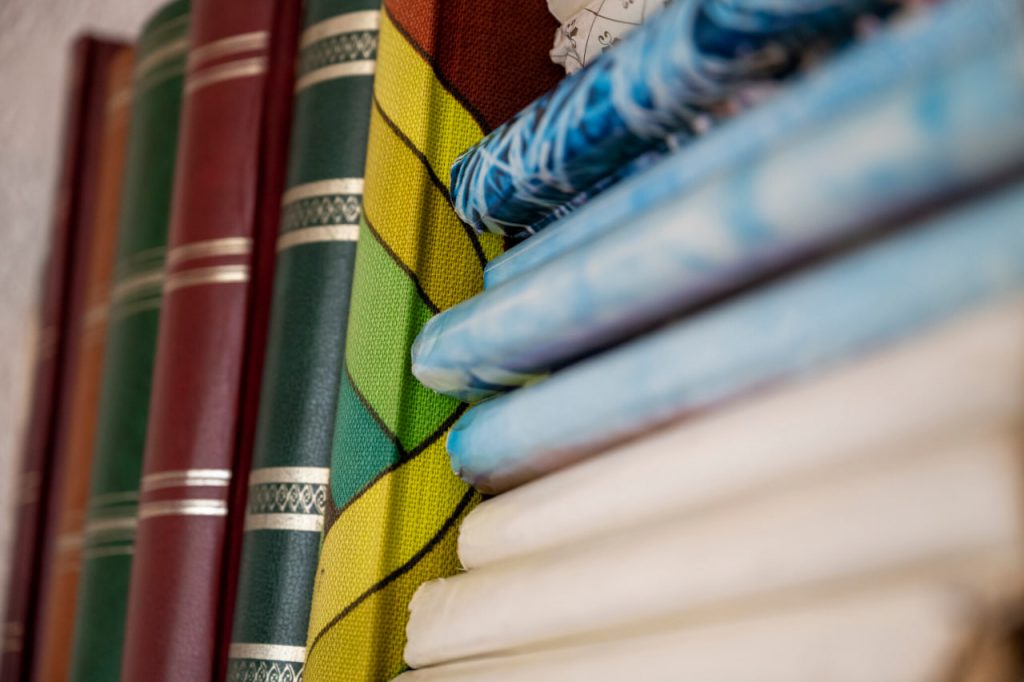Artistic bookbinding is a delicate and rewarding craft that combines creativity with technical skill. The materials you select for your bookbinding projects significantly influence the durability, appearance, and overall quality of the finished book. Whether you are creating a personal journal, a unique gift, or a professional portfolio, understanding the properties and uses of various materials is essential. This guide will explore the key materials involved in artistic bookbinding and offer advice on how to choose the right ones to suit your project’s aesthetic and functional needs.
Paper Types and Their Importance
Paper is the foundation of any book, so selecting the right type is crucial. Different papers serve different purposes, from the pages themselves to decorative elements like endpapers or inserts.
- Textweight Paper: This lightweight paper is used for the internal pages of a book. It should be durable yet thin enough to allow easy page turning. Acid-free, archival-quality paper is ideal for longevity and preservation.
- Cover Stock: Thicker and sturdier than textweight, cover stock is often used for softcover books or protective inserts. It offers added strength and can be textured or coated for special effects.
- Endpapers: Decorative papers used to attach the book block to the cover. Marbled, patterned, or handmade papers are popular choices to add beauty and character.
- Vellum and Parchment: These are traditional materials made from animal skins, prized for their durability and distinctive appearance, often used in high-end or historical bindings.
When choosing paper, consider weight, texture, acidity, and color. Archival and acid-free papers prevent yellowing and deterioration over time, making them a wise choice for heirloom or collectible books.
Choosing the Right Cover Materials
The book cover not only protects the pages but also sets the tone for the entire work. Covers can be made from a variety of materials, each with its own aesthetic and practical qualities.
- Leather: A classic choice for fine bindings, leather is durable and develops a beautiful patina with age. It can be tooled, dyed, and embossed for intricate designs. Different types of leather, such as goatskin, calfskin, and Morocco, offer various textures and finishes.
- Cloth: Book cloth is a fabric specifically designed for covering books. It comes in many colors and textures and can be coated for water resistance. Cloth covers offer a soft, tactile feel and are often used for hardcover books.
- Paper and Handmade Papers: For lightweight or artistic bindings, decorative papers can be used as covers. Handmade or specialty papers with unique textures and patterns add individuality but may require extra reinforcement.
- Synthetic Materials: Modern bindings sometimes use synthetic leather, vinyl, or other materials for durability and cost-effectiveness, especially in commercial productions.
Consider the durability, flexibility, and intended use of your book when selecting cover materials. Leather and cloth are more suitable for books meant to last, while paper covers allow for more artistic expression.
Adhesives and Their Roles
Adhesives play a vital role in holding your book together. The choice of glue affects the strength, flexibility, and longevity of the binding.
- PVA (Polyvinyl Acetate) Glue: A flexible, strong, and widely used adhesive in bookbinding. PVA is acid-free and dries clear, making it ideal for most projects.
- Animal Glue: Traditional glue made from collagen, used in fine bookbinding for its strong bond and reversible qualities. Requires heating before use.
- Hot Glue: Occasionally used for quick repairs or small craft projects, but not recommended for archival or professional binding due to brittleness.
- Double-sided Tape and Spray Adhesives: Sometimes used for decorative elements but generally avoided in structural binding.
Choosing the right adhesive depends on the materials you are joining and the book’s expected use. For most artistic bookbinding, acid-free PVA glue is the standard.
Tools and Additional Materials
Along with basic materials, several tools and accessories enhance the binding process and final product:
- Bookbinding Thread: Strong linen or cotton thread used for sewing signatures together. Waxed thread provides added durability.
- Boards: Heavy cardboard or binder’s board used as the internal structure for covers. Thickness and quality affect the book’s sturdiness.
- Headbands and Endbands: Decorative bands added to the head and tail of the spine, often sewn or glued in place, adding both strength and aesthetic detail.
- Bookcloth and Decorative Papers: Used for covering boards and enhancing visual appeal.
- Presses and Weights: Used to flatten and secure the book during various stages of the process.
Matching Materials to Your Project
When selecting materials for artistic bookbinding, it’s important to match them to the project’s purpose and style. For a delicate photo album, acid-free papers and soft cloth covers might be best. For a historical reproduction, leather covers and handmade papers will add authenticity. Experimenting with textures, colors, and finishes can lead to innovative designs, but always keep durability and functionality in mind.

